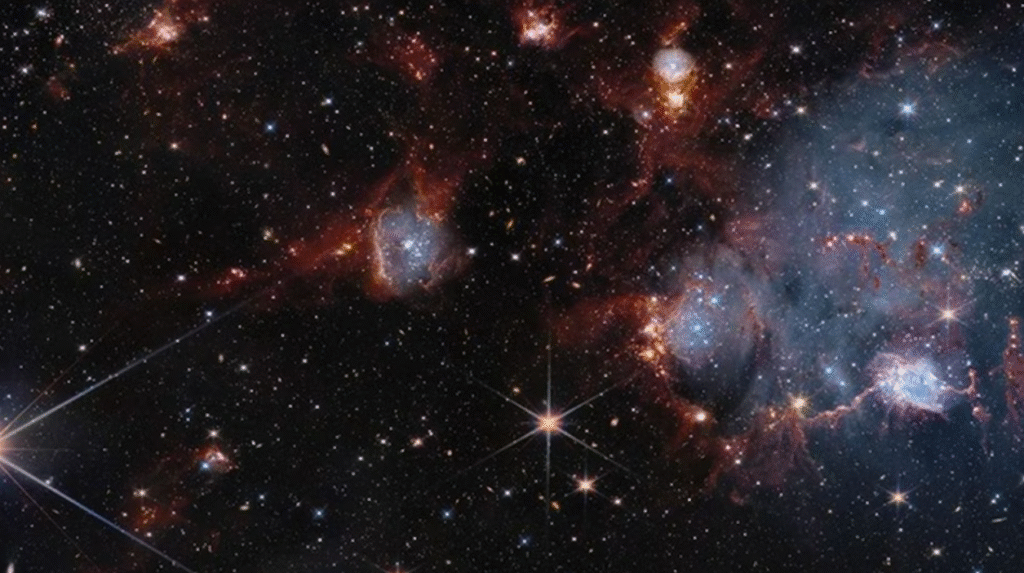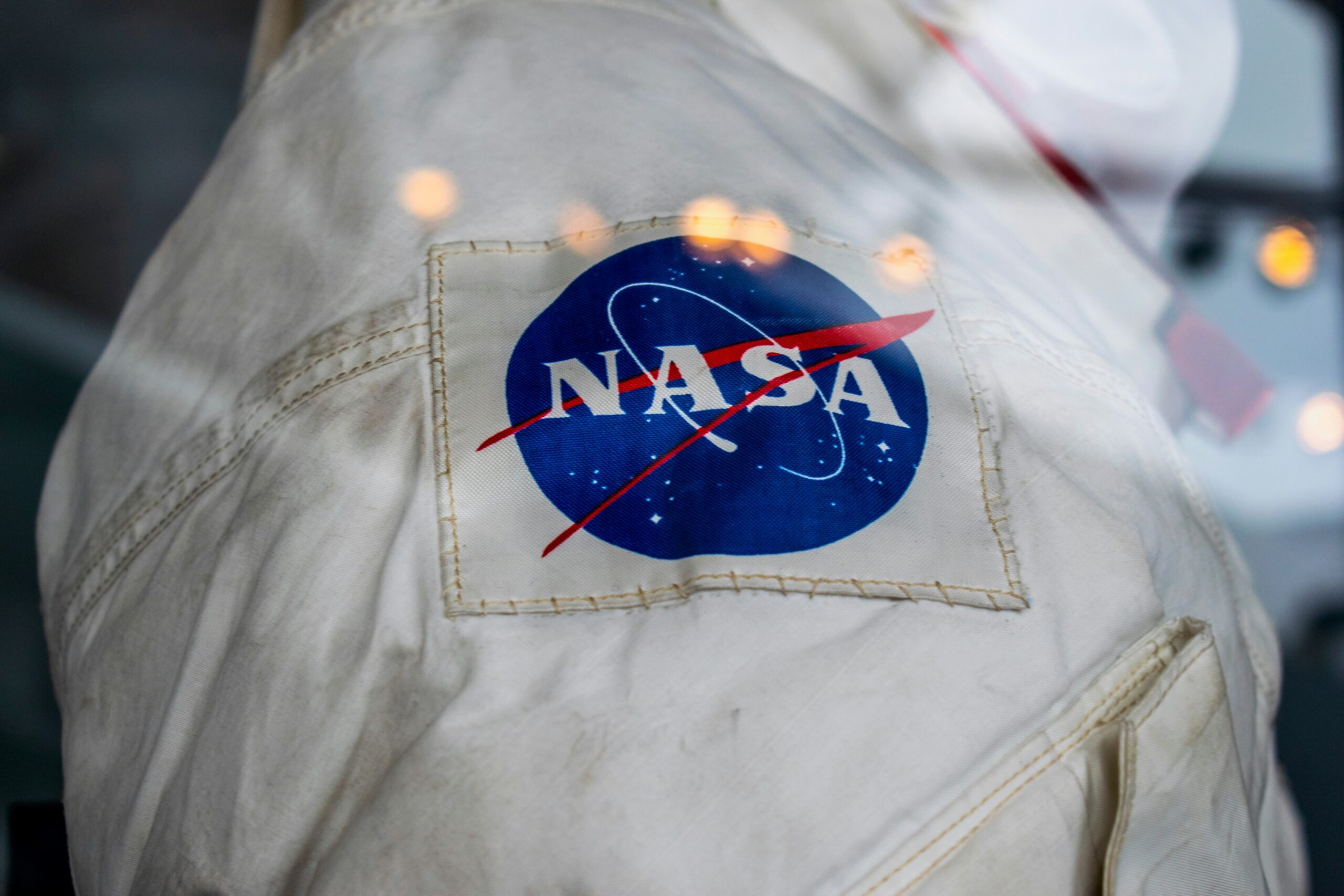Star formation in Small Magellanic Cloud was captured in striking detail by NASA’s Hubble and Webb telescopes. Scientists observed a powerful burst of stars, gas, and dust expanding from twin star clusters NGC 460 and NGC 456. These open clusters lie within the dwarf galaxy orbiting our Milky Way.
The region, filled with bright nebulae and interstellar clouds, shows stars being born from collapsing gas clouds. Hubble and Webb revealed a dramatic scene where glowing gas and dust swirl around newborn stars.
How Hubble and Webb Capture the Star Birth Process
Hubble’s optical images display glowing ionised gas, forming bubble-like structures in blue. These are caused by intense radiation from young stars. In contrast, Webb’s infrared vision uncovers warm red dust and fine filaments. It shows hidden regions invisible to regular telescopes.
While Hubble outlines shadows of cold dust blocking light, Webb highlights how this dust glows with starlight. Together, these tools offer a complete view of the star formation happening inside the Small Magellanic Cloud.

What the Small Magellanic Cloud Teaches About the Universe
This area, part of the N83-84-85 complex, holds rare and powerful O-type stars. These hot giants burn hydrogen rapidly and resemble conditions found shortly after the Big Bang. Because of this, star formation in Small Magellanic Cloud gives researchers a real-time look into the early universe.
Furthermore, scientists are using these findings to study how gas moves in and out of clusters. This helps refine our understanding of the galaxy’s evolution and the interstellar medium. By comparing with the nearby Large Magellanic Cloud, researchers gain new insights into cosmic interactions.

